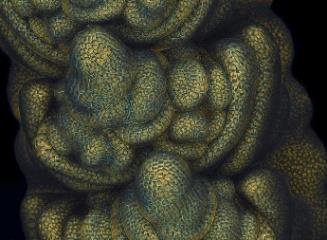2014 Eureka Prizes announced

The Australian Museum Eureka Prizes last night celebrated 25 years of rewarding outstanding contributions to Australian science. The national science awards acknowledge excellence in the fields of research and innovation; leadership; science communication and journalism; and school science.
The natural world
The NSW Office of Environment and Heritage Eureka Prize for Environmental Research was awarded to Graham Edgar and Rick Stuart-Smith, from the University of Tasmania, for creating the Reef Life Survey - a freely available global dataset documenting the health of the world’s reefs. The team carefully trained and marshalled over 200 volunteer divers who, between them, have surveyed more than 2000 reefs around Australia and more than 40 other countries since 2008.
Meanwhile, the University of New South Wales Eureka Prize for Excellence in Interdisciplinary Scientific Research was awarded to the University of Melbourne’s SEARCH (South Eastern Australian Recent Climate History) team for their success in mapping a thousand years of Australian climate history, drawing on early written observations including gazettes, newspapers, farm records and even First Fleet log books. The team also drew on many fields of science, studying coral records, tree rings, cave deposits and ice cores.
Fighting disease
The Australian Infectious Diseases Research Centre Eureka Prize for Infectious Diseases Research was awarded to CSIRO’s Hendra virus team for creating the first vaccine and effective human treatment against Hendra virus and developing skills and resources that are being applied against Ebola. The team has made a significant contribution to advancing our understanding of the threat posed by Hendra (and the closely related Nipah virus), including fully sequencing the virus genome.
The 2014 University of New South Wales Eureka Prize for Scientific Research was meanwhile awarded to the B-cell Team, from the Walter and Eliza Hall Institute of Medical Research, for unravelling the workings of specialised cells called antibody secreting cells (ASCs), which create antibodies to fight infection and disease. It was previously not understood how ASCs ‘choose’ which antibody to make and how they survive for long periods, so the new research will aid efforts to develop immune deficiency treatments and vaccines.
Communication
The 2014 New Scientist Eureka Prize for Science Photography was awarded to CSIRO’s Mark Talbot for his image ‘Wheat through the looking glass’, capturing the birth of a seed using a scanning electron microscope. Talbot combined images from two different modes of the SEM, using artificially coloured to highlight cell outlines and nuclei, revealing details normally invisible using SEM technology.
The Australian Government Eureka Prize for Science Journalism went to Sonya Pemberton of Genepool Productions for her investigation of community confusion about vaccines in the documentary Jabbed - Love, Fear and Vaccines. Jabbed examines the risks and science of vaccination, as well as the real cost of ‘opting out’. It aims to understand and dispel the fear of those parents who choose not to vaccinate their children.
For the full list of award winners, visit http://australianmuseum.net.au/eureka.
Mini lung organoids could help test new treatments
Scientists have developed a simple method for automated the manufacturing of lung organoids...
Clogged 'drains' in the brain an early sign of Alzheimer’s
'Drains' in the brain, responsible for clearing toxic waste in the organ, tend to get...
World's oldest known RNA extracted from woolly mammoth
The RNA sequences are understood to be the oldest ever recovered, coming from mammoth tissue...



